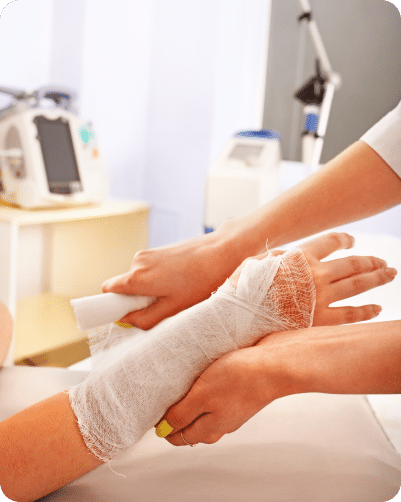
Chemical Burns
Understanding Chemical Burns and Their Treatment
What are Chemical Burns
Chemical burns occur when skin or other body tissues come into contact with corrosive substances such as acids, alkalis, or industrial chemicals. These burns can cause significant damage, potentially leading to severe pain, scarring, and complications if not treated promptly and properly. Understanding the nature of chemical burns and how to effectively treat them is crucial for promoting healing and minimizing long-term damage.
Causes of Chemical Burns
- Household Cleaners: Bleach, ammonia, drain cleaners, and other common cleaning agents.
- Industrial Chemicals: Strong acids (sulfuric acid, hydrochloric acid), alkalis (sodium hydroxide, potassium hydroxide), and solvents.
- Cosmetic Products: Hair dyes, perms, and other beauty products containing harsh chemicals.
- Agricultural Chemicals: Fertilizers, pesticides, and herbicides.
Types of Chemical Burns
- Acid burns tend to cause coagulation necrosis, which results in a thick, leathery eschar that limits further penetration of the acid into the tissues.
- Alkali burns can be more severe than acid burns because they cause liquefaction necrosis, which allows deeper penetration into the tissues and extensive damage.
- Organic compound burns: These substances can cause chemical burns along with systemic toxicity, leading to additional complications.
- Oxidizing agents can cause burns by releasing oxygen, leading to tissue damage and inflammation.
Treatment of Chemical Burns
- Remove the Chemical: Quickly remove any clothing or jewelry contaminated by the chemical.
- Rinse the Area: Flush the affected area with copious amounts of cool, running water for at least 20 minutes. Avoid using high-pressure water as it can drive the chemical deeper into the tissue.
- Avoid Neutralizers: Do not use neutralizing agents (e.g., baking soda for acids) unless specifically instructed by a medical professional.
- Protect the Burn: Cover the burn with a clean, non-stick dressing or cloth.
- Seek Medical Attention: Contact a healthcare provider or visit the emergency room immediately, especially for large or severe burns.

When to Seek Medical Attention?

It is crucial to seek medical attention for chemical burns in the following situations:
- Large Burns: If the burn covers a large area of the body or is deep.
- Facial Burns: If the burn affects the face, eyes, ears, hands, feet, or genital area.
- Severe Pain: If the pain is severe and not relieved by over-the-counter pain medications.
- Inhalation Injuries: If the chemical was inhaled, causing respiratory symptoms such as difficulty breathing, coughing, or chest pain.
- Persistent Symptoms: If symptoms such as redness, swelling, or pain worsen over time or do not improve with initial treatment.
- Signs of Infection: If there are signs of infection, including increased redness, warmth, pus, or fever.
If you have any concerns about the severity of your chemical burns or if you’re unsure about how to properly care for the wound at home, it’s always best to err on the side of caution and seek medical advice. Prompt medical attention can help ensure proper treatment and prevent complications.
Learn MoreOur Approach
To Chemical Burns Care
At MetaCure we prioritize the well-being and comfort of our patients. Our experienced team of healthcare professionals is dedicated to providing prompt, comprehensive, and compassionate care for chemical burns of all types and severities.

Our Chemical Burns Treatments
Proper medical treatment is essential for managing chemical burns and preventing complications. Our wound care doctors offer comprehensive care for chemical burns, including:
